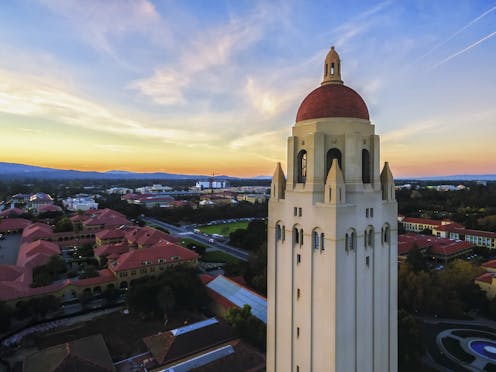
By Dean and Professor of Sustainability, Arizona State University
By the time the application window closed, Amazon had received 238 proposals from cities and regions throughout North America looking to become the second headquarters of the behemoth tech company.
Amazon invited proposals especially from places that looked a lot like its native Seattle: metro areas with more than a million people; a stable and business-friendly environment; communities that could “think big and creatively” about real estate options; and a location that would attract and retain technical talent.
In the race to attract high-tech companies, what can cities and regions do to become centers of innovation? At the moment, some places are clearly in the lead.
By my analysis of data from the U.S. Patent Office, Santa Clara County, California, is sprinting ahead of the country. Between 2000 and 2015, more than 140,000 patents were granted in Santa Clara County. That’s triple the number for second-ranked San Diego County.
Four other counties in California – Los Angeles, San Mateo, Alameda and Orange – make the top 10. Washington’s King County, Massachusetts’s Middlesex County, Michigan’s Oakland County and Arizona’s Maricopa County round out the list.
These counties are in large metropolitan areas that are known as technology and innovation centers, including San Francisco, San Diego, Boston and Seattle. The other metro areas in the top 10, not the usual tech-hub suspects, are Greater Los Angeles, Detroit and Phoenix.
Higher education
Besides large concentrated populations, these metro areas share two other ingredients that support innovation. All of them have one or more leading research universities and a large proportion of college-educated people.
Santa Clara County is home to Stanford University, an institution that has become synonymous with the high-tech and innovation economy of Silicon Valley.
Stanford’s rise as a world-class research university coincided with a rapid increase in federal and military spending during the Cold War. The university’s suburban location gave it an advantage, too, by providing land for expansion and for burgeoning high-tech companies. Stanford’s leadership aggressively courted research opportunities aligned with the priorities of the military-industrial complex, including electronics, computing and aerospace.
As a leader in patents, Santa Clara County benefits from a well-educated population, with more than half a million adults over 25 years of age holding a bachelor’s degree or higher, the 10th-highest figure in the country.
Nationally, there is a strong relationship between the number of college-educated adults and the number of patents filed in those counties. I found that, for every increase of 1,000 college-educated people, one can expect 33 more patents to be granted in those counties.
For counties that contain one or more of the country’s “131 Doctoral Universities with Very High Research Activity,” as ranked by Indiana University’s Carnegie Classification of Institutions of Higher Education, the average number of patents filed was 6,686, compared to only 371 for counties lacking one of these research institutes.
Cost of living
Another common trait about most of these centers of innovation is the jaw-dropping cost of housing.
The median sale price for houses in San Jose in Santa Clara County exceeded US$1 million for every month in 2018. Between 2000 and 2017, house prices more than doubled in the California and Washington state counties with the highest number of patents.
Competition for higher-wage talent pushes up housing and other costs in these innovation centers. Although housing prices increased in greater Boston, Phoenix and Detroit, they remained relative bargains compared to the West Coast.
The threat of rising housing costs and gentrification was one of many reasons why residents protested the planned building of Amazon’s second headquarters in the New York City borough of Queens. The company has now decided to pull out.
Continue reading
Article source: http://theconversation.com/why-some-counties-are-powerhouses-for-innovation-111040








You must be logged in to post a comment.